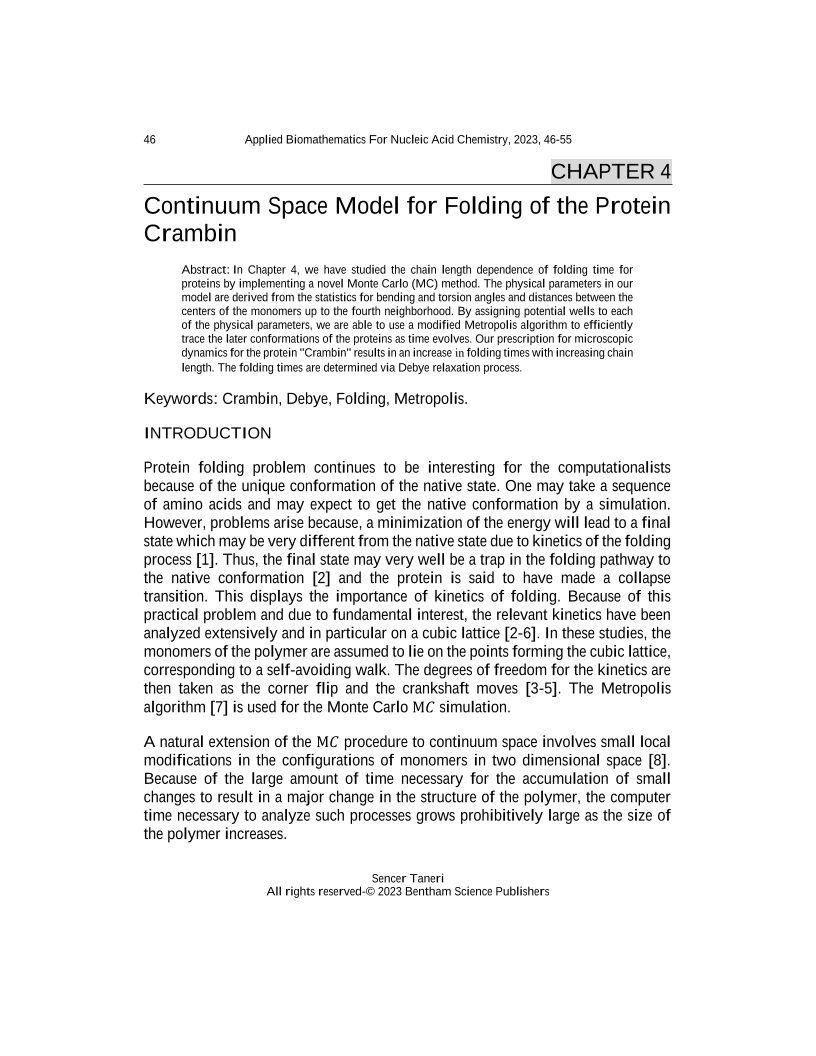Continuum Space Model for Folding of the Protein Crambin

- By Sencer Taneri1
-
View Affiliations Hide Affiliations1 University of Southern California, Los Angeles, USA
- Source: Applied Biomathematics For Nucleic Acid Chemistry and Protein Folding: Quantitative Simulations , pp 46-55
- Publication Date: November 2023
- Language: English
Continuum Space Model for Folding of the Protein Crambin, Page 1 of 1
< Previous page | Next page > /docserver/preview/fulltext/9789815179965/chap4-1.gif
In Chapter 4, we have studied the chain length dependence of folding time for proteins by implementing a novel Monte Carlo (MC) method. The physical parameters in our model are derived from the statistics for bending and torsion angles and distances between the centers of the monomers up to the fourth neighborhood. By assigning potential wells to each of the physical parameters, we are able to use a modified Metropolis algorithm to efficiently trace the later conformations of the proteins as time evolves. Our prescription for microscopic dynamics for the protein Crambin results in an increase in folding times with increasing chain length. The folding times are determined via Debye relaxation process. nbsp;
-
From This Site
/content/books/9789815179965.chap4dcterms_subject,pub_keyword-contentType:Journal -contentType:Figure -contentType:Table -contentType:SupplementaryData105

